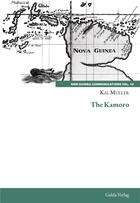-
Date de parution : 19/09/2023
-
Editeur :
Galda Verlag
-
EAN : 9783962033149
-
Série :
(-)
-
Support :
Papier
Résumé:
This book compares the two sides of New Guinea: the independent country of Papua New Guinea (PNG) and the West New Guinea (WNG) that forms a part of the Republic of Indonesia.
By sharing the same island there are many similarities that apply to both sides such as the ethnic makeup in the... Voir plus
This book compares the two sides of New Guinea: the independent country of Papua New Guinea (PNG) and the West New Guinea (WNG) that forms a part of the Republic of Indonesia.
By sharing the same island there are many similarities that apply to both sides such as the ethnic makeup in the eastern and western halves of New Guinea. Yet differences exist: geologies and geographies underlie some basic difference: outward maritime trade routes in the west focus toward the Moluccas while those in the east look towards the South Pacific. The inland trade routes are similar in the highlands following the dictates of the rugged terrain. Stone blades for axes and adzes were among the most important trade items everywhere, along with salt from local saline pools. The island's Babel of over 1,100 languages has prevented any large-scale political entities. And while the art styles show some similarities, marked differences are found in the east and the west.
The colonization process defines much of the current differences between the two sides. The west was colonized by the Dutch as part of their East Indies domain, now Indonesia. In the east, the British and the Germans were the first to take possession, with Australia taking over the entire west after 1914. Treatment of the Papuans differed considerably. In the west, it was almost complete neglect as the Dutch were mostly interested in the productive money generating parts of the East Indies, lacking in West New Guinea. In what became Papua New Guinea, working in plantations and gold mining depended on cheap Papuan labor, with their treatment showing considerable variation.
World War II affected the two sides quite differently. The Japanese juggernaut rolled over the north coast of West New Guinea, then that of PNG before being stopped in the Solomon Islands. The expulsion of the Japanese took nearly three years on the PNG side but only a few months in WNG. This difference had profound effects, quite different on the two sides. The post war history in PNG headed for eventual independence in 1975 while WNG came to resemble an Indonesian colony with practically no political voice for the Papuans. Only a rebel movement contests Indonesian hegemony.
The last chapter on mining shows the differences between the two sides on this most important element of their economies. Basic land ownership, individual and clan rights cause many problems in PNG while Indonesian control negated any difficulties for any mining approved by the central government in Jakarta.
Donner votre avis















